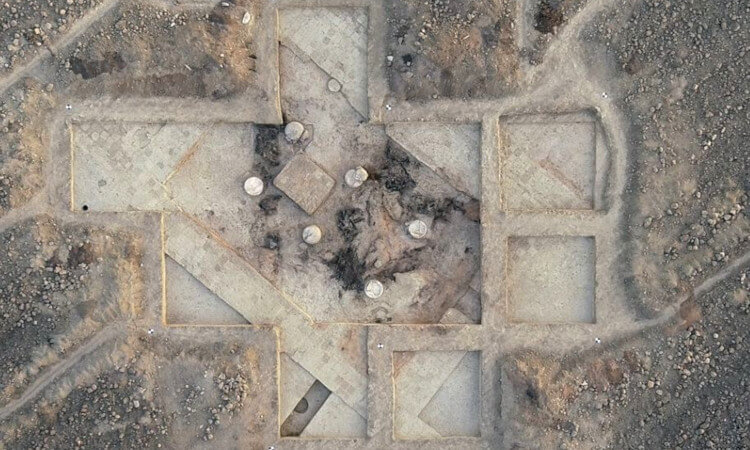Archaeologists uncover 5th century BCE palace in Georgia’s east

A view of the remains, with its six pillar bases visible, found in an open location in the valley. Photo: Georgian National Museum.
Georgian and German archaeologists working at an Alazani Valley site in Georgia’s east have discovered remains of a 5-4th century BCE “palace” building currently being studied by professionals.
The site, located in the Sighnaghi Municipality village of Jugaani, in the Kakheti province, has been subject of a geophysical study by a reconnaissance team of the Georgian National Museum, which runs an expedition at the location.
In a fresh finding for the team, they came across the one-hectare building with a “complex plan”, supposedly a central hall of a larger construction.

An aerial view of the finding, which archaeologists believe was intended as a central hall of a palace building. Photo: Georgian National Museum.
A report from the expedition said the remains pointed to a hall with pillars, damaged through fire and later plowing works.
Wooden columns of the hall are based on limestone, bell-shaped bases. There have also revealed square podiums built of mud bricks, where supposedly have to be a throne or an altar,” a description from the GNM said.
Historians have already assumed the building to have been built during the Achaemenid era, taking its “bell-shaped bases”, developed at the time in the Persian Empire, as an indication.

Teams of Georgian and German archaeologists have been involved in the works. Photo: Georgian National Museum.
Rising about forty centimetres above ground, the remains show 1.5-metre-thick mud brick walls, with decor for the pillar bases cut off at the bottom through damage.
The latest finding has been uncovered by the joint Georgian-German expedition that involves students from the Tbilisi State University and the University of Munich.
Led by professor Iulon Gagoshidze — working as scientific consultant of the GNM — from the Georgian side and doctor Kai Kanyut from the German part of the collaboration, the expedition also involves a team of German geophysicists led by professor Jorg Fassbinder.
 Tweet
Tweet  Share
Share